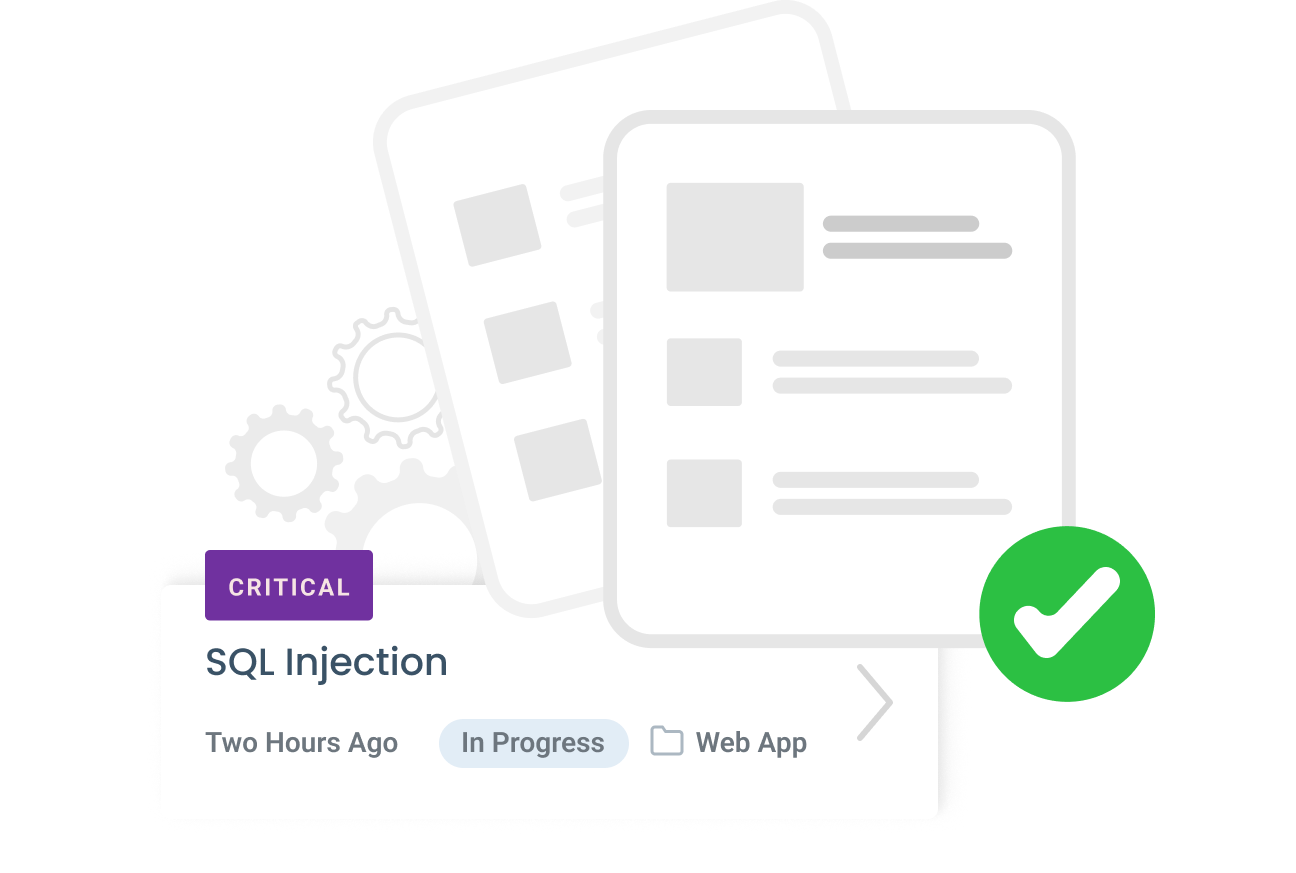Web Application Security
Continuous Penetration Testing for Web Applications
Sprocket continuously tests using real-world attack paths threatening your organization's web applications. When a new attack is released, we can promptly test it across all of your applications. Our testing teams work to identify risks affecting your applications before potential breaches occur.

Overlooked Threats
60% of web applications contain at least one critical vulnerability.
While engineers provide great value to organizations, web applications are being updated and deployed at an incredible speed, often across different departments and groups within the organization. This is why a dedicated team of penetration testers is needed to strengthen an organization's web application security posture and continuously test the security of deployments.
As your environment changes, so should your defenses. Continuous Penetration Testing is recommended to help your teams stay ahead of the latest threats facing your organization's web applications.


Danger in the Details
Scanners & code reviews just don't cut it for web application security.
Even with some form of security measure during web application deployments, many vulnerabilities can be deeply embedded and often remain undetected for several months or even years. Cross-site scripting (XSS), SQL injections, and cross-site request forgery (CSRF) occur all the time and are difficult to identify during rudimentary security scans. Our testing team adopts a dedicated attacker's perspective; searching for API endpoints, identifying cloud misconfigurations, assessing authenticated applications, and consistently monitoring changes to the sites.
Using Continuous Penetration Testing on your web applications provides both security and peace of mind, as it ensures that vulnerabilities not detected by scanners or code reviews will be uncovered by human testers
Stay Compliant
Remediate effectively & generate on-demand compliance reports.
The Sprocket Portal allows organizations to access real-time data on uncovered vulnerabilities within their web applications. These Findings are used to collaborate during the discovery and remediation processes.
In addition to efficient remediation efforts, the reports created within the Portal can be used to accommodate required regulatory compliances, such as PCI DSS, SOC2, CMMC, and HIPAA.

How It Works
Web Application Testing Methodologies
Reconnaissance
This involves gathering information about the target web application and its environments, such as the architecture, technologies used, and potential vulnerabilities.
Vulnerability Scanning
The Sprocket testing team utilizes proprietary and commercial-grade scanning software to locate any lurking vulnerabilities across your web application.
Exploitation
Once vulnerabilities have been discovered, testers will perform attacks such as SQL injection, cross-site scripting (XSS), and cross-site request forgery (CSRF).
OWASP & Beyond
Our team will test for vulnerabilities as categorized within the OWASP Top 10. These tests will ensure your web application is not vulnerable to major security risks.
Authenticated Testing
Many features of applications hide behind login forms. Experts will put your authorization and authentication mechanisms to the test, identifying any weaknesses or security issues involved with these business processes.
API Testing
Modern web applications often contain important APIs which can be exploited by threat actors. Testers will use various methods, such as fuzzing, injections, and brute-force attacks to reveal the vulnerabilities that scanners cannot.
Input Validation Testing
Vulnerabilities within input handling are commonly abused by threat actors. Testers will fuzz your web application's inputs to gain unauthorized access or compromise the application's functionality.
Session Management Testing
Poorly managed sessions can lead to sensitive data exposure. The Sprocket team will test session handling and authorization practices currently being used in your application.
Continuous Human & Automated Security
The Expert-Driven Offensive
Security Platform
Continuously monitor your attack surface with advanced change detection. Upon change, testers and systems perform security testing. You are alerted and assisted in remediation efforts all contained in a single security application, the Sprocket Platform.
Expert-Driven Offensive Security Platform
- Attack Surface Management
- Continuous Penetration Testing
- Adversary Simulations
